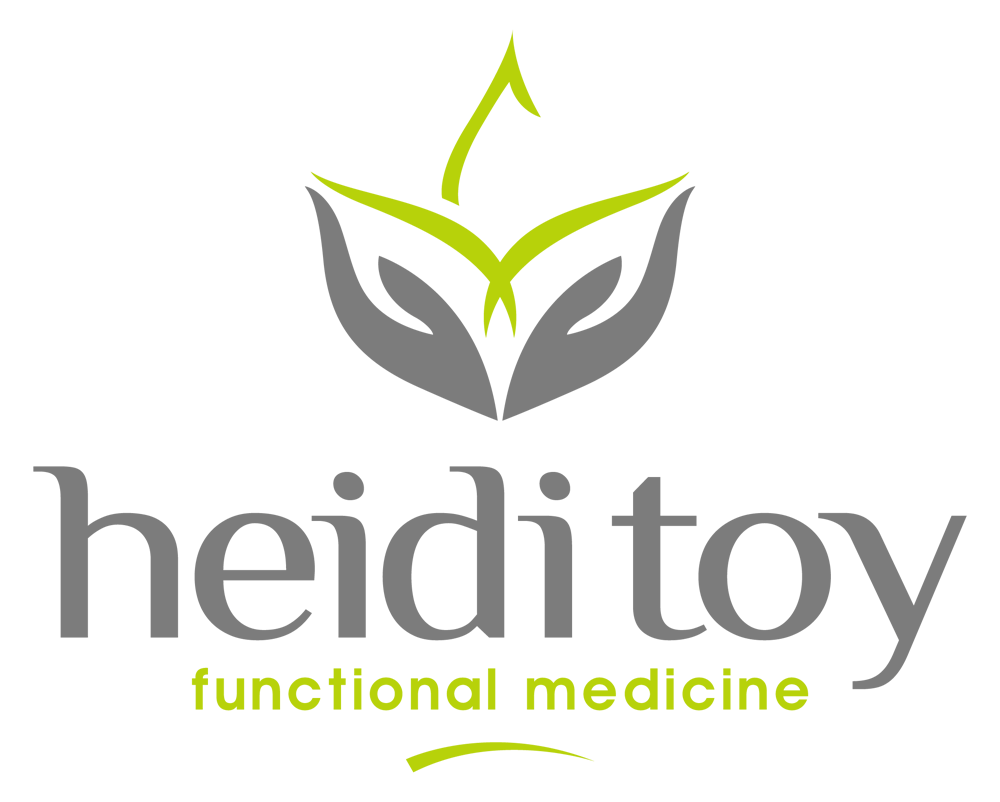HIITs and Blood Pressure
When it comes to lowering blood pressure exercise is a non-negotiable factor.
You may be thinking, "what is the most effective form of exercise to lower blood pressure?"
References
More and more studies are showing the exciting results of something called HIIT in lowering blood pressure. HIIT stands for High Intensity Interval Training
What is HIIT?
HIIT is not any specific exercise, rather, it is a technique. You can apply this technique to almost any kind of exercise whether it be walking, riding a bike, swimming, doing some body weight exercises or even dancing in your living room.
** ALWAYS CHECK WITH YOUR PHYSICIAN BEFORE STARTING ANY FORM OF EXERCISE FOR HIGH BLOOD PRESSURE
HIIT training consists of combining very short bursts of working at your absolute max alternating short periods of active recovery rest. Research has found that this form of exercising gives you more health benefits than any other way of exercising.
It shortens the amount of time you need to spend on exercise and is more effective; you work out for just 10-30 minutes and reap impressive health benefits. You burn more body fat, your metabolism is stimulated for long after you finish exercising, and it also it helps you utilize oxygen more efficiently.
One of the biggest benefits people find from HIIT is the reduction in training time. Through HIIT, you can put in about half the amount of time compared to traditional cardio exercise to reach your goals.
One study found that just 2 minutes of HIIT sprinting increased metabolism as much as 30 minutes of running. HIIT increases the efficiency of your heart and HIIT training also has a major effect on naturally lowering your blood pressure.
HIIT and blood pressure:
Although most any type of exercise has its benefits, HIIT shines when it comes to saving time. Using the HIIT technique is the ultimate short-cut.
Study after study shows that HIIT exercise improves blood pressure in people with hypertension better than any other kind of exercise routine.
HIIT is extremely effective in reducing resting heart rate and blood pressure in overweight and obese individuals.
It has been shown that HIIT exercising just 3 times per week for just 20 minutes at a time lowers blood pressure more effectively than continuous endurance training.
What is the science that makes HIIT so effective?
HIIT training changes something called endothelial function.
The endothelium is a very thin membrane that lines the inside of your heart and your blood vessels. The cells in this membrane release a variety of substances that control how your blood vessels relax and contract.
We know that stiff hard arteries play a role in high blood pressure.
The ability of your artery walls to expand (vasodilate) is very important.
You need to have flexibility in your arteries to allow for appropriate blood flow throughout your body.
HIIT improves endothelial function and reduces the stiffness in your artery walls more so than any other traditional form or exercise.
Just a 1% improvement in your endothelial function can result in a 13% reduction in the risk of cardiovascular events like heart attacks and strokes.
One study showed that 73% of people restored blood pressure to normal using a HIIT training method for just 2 months and 24 exercise sessions. There was a significant reduction in systolic blood pressure from 145.4 (± 9.0) to 118.3 ( ± 15.6) mm Hg.
How to Apply HIIT
With HIIT training you're are going to go ‘all out' at a high intensity for short amounts of time. You then do an ‘active recovery' rest for a short interval. You can apply this technique to any kind of exercise, walking, running, jumping rope, cycling and even to weight training.
I personally prefer using a stationary bike for minimizing injury. It is simply a great option to implement HIIT into your workouts.
Using the HIIT on a stationary bike
Warm-up for 5 minutes on a low setting.
After your 5 minute warm-up increase the tension on the bike and pedal as fast as you can for 20 seconds. This is called the Sprint phase. After the 20 second sprint phase, lower the tension on the bike and comfortably pedal for 2 minutes.
This is one session of HIIT.
Repeat the above 5 times and you are done.
Heart Recovery Tip
After doing your 20 second sprint, lower the tension and wait 60 seconds and check your pulse. You want your elevated pulse to come down between 8-10 beats. This is your heart recovery zone. If for some reason your pulse does not come down 8-10 beats you should stop and call it a day. For example: After you do your all out sprint for 20 minutes your heart rate when go up to 110 beats. After one minute of decreasing the tension and comfortably pedaling, your heart rate should come down to 100-102 beats. That is a good heart recovery.
Although as I mentioned above I prefer the stationary bike this can be applied to walking as well. Simply walking at a comfortable pace for 5 minutes then do an all out "brisk" walk for 20 seconds. Walking comfortably for 2 minutes then repeat five times.
That is all you need to do to maximize this effective form of exercise (HIIT) to lower your blood pressure.
Get out there and start your HIIT training today!
Get out there and start your HIIT training today!
References
https://pubmed.ncbi.nlm.nih.gov/29424402/
https://www.sci-sport.com/en/articles/HIIT-and-hypertension-Improvement-of-cardiovascular-functions-163.php
https://www.healthline.com/nutrition/benefits-of-hiit#TOC_TITLE_HDR_8
https://pubmed.ncbi.nlm.nih.gov/21450580/
https://journals.sagepub.com/doi/abs/10.1177/1741826711400512
https://www.sciencedirect.com/science/article/pii/S0531556516306003
Don't Miss Out On More!

Heidi Toy FNTP
I help people all over the world heal by identifying and treating the root cause of their body imbalances. Through diet and nutrition, I guide them towards wholeness and balanced lives.
Heidi Toy Functional Medicine Blog

For many of us, our experience with food comes with some sort of baggage. Maybe you eat to cope with stress, anxiety or depression. Maybe you’ve grown up with value-words placed on food such as “junk” and “healthy,” and told you couldn’t eat the “good stuff” (brownies and ice cream) until you finished the “yucky stuff” (broccoli and lettuce). Or, even more serious, maybe you or a loved one has struggled or is struggling with an eating disorder. Food is amazing and life-giving. It can be used as a means to celebrate, socialize, or simply just provide fuel for the body. Our relationship with food shouldn’t be a difficult one, it should be an enjoyable one. A way to get to that healthy place in your relationship is to practice mindful eating. Mindfulness is a Buddhist concept of mediation that can help you recognize emotions and physical sensations present. Through mindful eating, you can learn to truly pay attention to your experiences, cravings and physical cues. The basics of mindful eating are: Eat slowly, without distraction. If you are eating with others, take a least five minutes at the start of the meal to enjoy the food on your plate before engaging in discussion. Pay attention to your body--are you still hungry, or are you getting full? Learn to distinguish between cravings and true hunger. Use all your senses when you sit down to a meal. Make an effort to notice how the food looks, smells, tastes, feels in your mouth, and sounds when you chew. Appreciate your food, who has prepared it (even if it’s you--what an accomplishment!), and where it comes from. Being mindful of your experience will help you slow down while eating. This can prevent overindulgence by making the act of eating intentional instead of automatic. It will also help you become aware of triggers that make you want to eat (are you truly hungry at 9pm every night when you sit down to watch that Netflix show, or do you just pour yourself a bowl of Chex Mix because that’s what you always do?). Knowing your triggers can give you time to process what’s truly going on and the ability to react properly.

Here are the essential functional medicine steps for Fifth Disease! If your child comes home with bright red cheeks that look like they’ve been “slapped,” chances are they may have fifth disease, also known as erythema infectiosum. This mild viral illness, caused by parvovirus B19, is common in kids and often spreads t

Successfully healing Adrenal Fatigue requires a holistic approach focussed on fixing the root cause of your problems and supporting your body through the healing process. This means we are going beyond just temporary symptom relief. We want you to return to vibrant health so you can get back to the active and healthy lifestyle that Adrenal Fatigue is holding you back from. (Adrenal Fatigue is more accurately known as HPA-D. Check out my blog HPA-D vs Adrenal Fatigue to learn more.)Again, we would be completing further testing to get to the root cause of your issues, but this protocol is a great starting point for healing. We focus on five essential areas for fast and long-term healing.

I want it! Sooooooo bad. But I want to lose weight, too. It’s not on my list of healthy, squeaky clean healing foods, but what will one little bite hurt? I can start again fresh and clean tomorrow. When brownies call your name and you are trying to break up with them, it is difficult to avoid the urge to want to indulge. But you know if you give in that you will berate yourself with guilt for the next 24-48 hours and the tsunami of eating everything off-plan will take over your life. One bite will start an avalanche... But you just can't stop thinking about the pan of brownies you made for the kids.

Did you know most people didn’t have refrigerators in their homes until well into the 1900’s? It wasn’t even invented for large scale commercial use until the mid 1800’s [1]. So how did people keep their milk cold and make their food last longer? Fermentation. It sounds like a gross concept, because we often associate fermentation with a bad odor, but foods like cheese, yogurt, sauerkraut and pickles are all fermented foods. And those aren’t gross, are they? Well, some might disagree with me about sauerkraut, but that’s beside the point. Fermented foods are digestive aids. Microscopic living organisms in fermented foods help extend the food’s shelf life, enhance flavor, and help the body absorb minerals. These organisms pre-digest the food, getting rid of harmful components, and create more vitamins and enzymes than the food began with. Enzyme-rich foods have many benefits including [2]: Increase digestibility of food we eat Boost immune system Increase alkalinity; neutralizing pH levels Provide a healthy balance of friendly flora in the gut (Learn more about your microbiome in my other blog posts ) Tone the colon and help with elimination Control cravings for unhealthier foods Eliminate toxins and undigested wastes in the body In the “old days,” people use to ferment all kinds of foods through pickling, canning, pasteurization and added salt. Nowadays, however, large scale fermentation has lost many of its nutritious benefits due to the need for speed to get the product on the shelf as fast as possible and as cheap as possible. The only true fermented foods you will find are sauerkraut, kombucha, yogurt and kefir, beans, wine and beer, some meats (such as salami and pastrami), legumes and nuts (such as tofu, soy sauce and miso), sourdough bread, and various kinds of vegetables [3]. Fun facts about sauerkraut: The Germans “stole” it from the Chinese! Sauerkraut (probably not labeled as such for the Chinese, but the same recipe) was one of the main foods for those who built the Great Wall of China. Genghis Khan brought it to Eastern Europe during an invasion. It also contains high levels of vitamin C, and sailors often took it on long journeys to prevent scurvy.

How can we best keep blood sugar stable? Do what our body is designed to do – use fat for energy. Our species did not survive the Ice Age because of vanilla coffee lattes and cheesecake. Throughout most of our history, we ate a diet that was likely 50-70 percent fat. Look at the old family photo albums, specifically pictures of people in the first half of the 1900s, before we had so many processed foods. You won’t see many fat people--in fact, most look darn skinny. If they lived on the farm, they ate lots of eggs, meat, milk, and vegetables out of their own backyards. “Diet foods” were non-existent. Heart disease was almost non-existent. Our metabolism is designed to work much better with fats better than with sugar. Fats provide the slow and steady fuel our body likes to use for energy. Think of fats as a slow-burning log on the fire. One log (i.e. one meal containing fats) lasts for hours. Starchy carbs, on the flip side, are like kindling. You constantly have to throw more twigs (chips, pasta, bagels) to keep the fire burning. The first step is to know your sugars by reading the labels, and then avoid said sugars as much as possible.








































































































